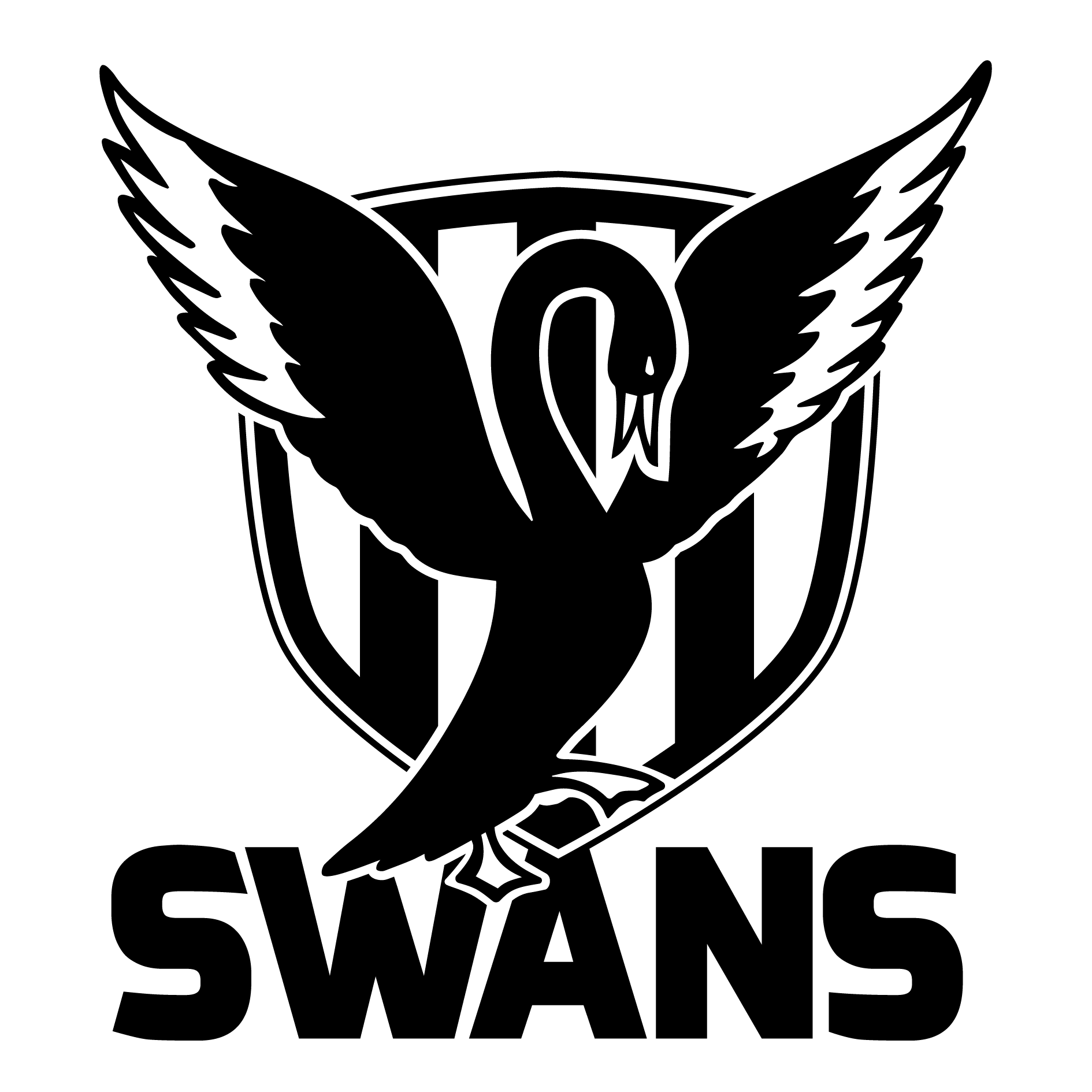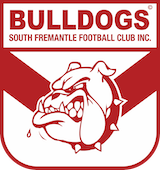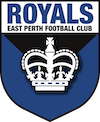Select grade below
- Round 1Sat Mar 3016:10
 10.10.70VS
10.10.70VS 8.8.56
View Stats
8.8.56
View Stats - Round 2Sat Apr 0616:00
 17.14.116VS
17.14.116VS 9.14.68
View Stats
9.14.68
View Stats - Round 3Sat Apr 1316:10
 9.12.66VS
9.12.66VS 9.9.63
View Stats
9.9.63
View Stats - Round 6Sat May 0414:30
 VS
VS
 Fremantle Community Bank Oval
Fremantle Community Bank Oval - Round 7Sat May 1114:30
 VS
VS
 Mineral Resources Park
Mineral Resources Park - Round 8Sat May 2514:30
 VS
VS
 East Fremantle Oval
East Fremantle Oval - Round 9Sun Jun 0214:30
 VS
VS
 Mineral Resources Park
Mineral Resources Park - Round 10BYE

- Round 11Sat Jun 1513:10
 VS
VS
 Lane Group Stadium
Lane Group Stadium - Round 12Sat Jun 2214:30
 VS
VS
 Revo Fitness Stadium
Revo Fitness Stadium - Round 13Sat Jun 2914:30
 VS
VS
 Mineral Resources Park
Mineral Resources Park - Round 14Sat Jul 0614:30
 VS
VS
 Mineral Resources Park
Mineral Resources Park - Round 15BYE

- Round 16Sat Jul 2014:30
 VS
VS
 Sullivan Logistics Stadium
Sullivan Logistics Stadium - Round 17Sat Jul 2714:30
 VS
VS
 Mineral Resources Park
Mineral Resources Park - Round 18Sat Aug 0311:10
 VS
VS
 Mineral Resources Park
Mineral Resources Park - Round 19Sat Aug 1014:30
 VS
VS
 Sullivan Logistics Stadium
Sullivan Logistics Stadium - Round 20Sat Aug 1714:30
 VS
VS
 Mineral Resources Park
Mineral Resources Park - Round 21Sat Aug 2414:30
 VS
VS
 Steel Blue Oval
Steel Blue Oval
Syd Shaw a Surprise Packet

To most post World War Two football fans, Perth's star full back Syd Shaw was one of a number of ex-servicemen who put their stamp on the game, eager to make up for the years lost while serving overseas.
Syd's bare military record shows he enlisted in 1940, fought at El Alamein in North Africa where he was captured by the Germans in July 1942, was a POW in Italy, and made it back to Perth in November 1944, then discharged.
He made his league debut with the Redlegs, as the club was then known, in 1945, played 150 games and represented WA in two carnivals, Hobart in 1947 - when he played in the winning WA team against Victoria - and Brisbane in 1950.
But for the long kicking custodian who hung up his boots in 1953, that's just scratching the surface.
Now aged 94, Syd's face lit up when he described his rich football and military experiences to me at his unit in Woodvale, surrounded by extensive memorabilia. And he recalled the events and dates as if they happened yesterday.
Born on 22 December 1922, Syd was a Victoria Park boy and attended the "bottom school" in Cargill Street. He was right into football, and his opponents in school games included other future Perth champions such as centreman Ern Henfry and full forward Ron Tucker.
Syd signed up for the 2/32 Battalion soon after war broke out, and left Fremantle in the Queen Mary, bound for the Middle East, in late 1941, at the start of an extraordinary three year period in his eventful life.
He saw action at El Alamein before his unit was overrun by the Germans and he was captured "on 22 July 1942". After a month in captivity in Ben Ghazi ("the horror camp - and full of fleas"), he set sail on the Nino Bixio for Italy.
"But the British submarine, the 'Turbulent', put two torpedoes into the ship, and all hell broke loose," Syd said. "I was just lucky but 432 men died in that incident."
The badly damaged and listing ship made it to Greece, and Syd and the other surviving POWs were then shipped to Italy, ending up in POW Camp 57 at Udine, near the border with Yugoslavia. "A terrible camp", he said.
The action continued. The vacant hut he and his mates were allotted was being used by other POWs for the secret burrowing of an escape tunnel. Thirty men found freedom through it.
Syd was set to work on a road project but he and his mates set their own rules. They refused to work on Saturdays and then negotiated a one day on, one day off roster. When the Italians surrendered to the British "on 10 September 1943" he was in a group of 13 Australians who "cleared out and headed for the Swiss border".
It took 13 days to cover the 80 kilometres on foot, in freezing conditions. Syd said they were wearing just shirts and shorts at altitudes of up to 12,000 ft. On "23 September 1944", Syd was released from internment in Switzerland, eventually made it back to Perth in November and was discharged.
However the army was in his blood and he signed up again in late 1947, seeing service in Malaya (now Malaysia) and New Guinea. He also served for two years in the elite SAS regiment. Syd finally retired as a warrant officer in March 1975, after 32 years service in the infantry.
Syd was 22 when he started his football career with Perth, then based at the WACA Ground, in 1945. He didn't miss a match for two seasons, and was chosen to play full-back in the 1947 Hobart carnival team captained by Perth team mate Merv McIntosh.
The army transferred him to country Victoria in 1948. Efforts to join old Perth teammates Henfry and George Bailey (1945 Sandover Medallist) at Carlton failed. But he did win the fairest and best award for the Mornington League.
That season he also came up against a lively young full forward playing for the Hastings club who struck him as extremely talented. Their paths crossed again when the young forward was in the Victorian carnival team in 1950, after joining Essendon. His name was John Coleman.
Syd recalls other Perth players in the WA carnival side were McIntosh, Tucker, Terry Moriarty, Reg Zeuner, Phil Craven and Bob Miller.
He remembers the 1950 grand final, in which South Fremantle defeated the Redlegs by six points, as the one that "got away". "In a tight last quarter, South's Steve Marsh grabbed the ball, ran across the ground and, with wind assistance, kicked to Don Wares. He marked, kicked accurately for goal, and the game was all over."
Syd played on until 1953 but retired mid season, aged 31, after being injured. By then he had notched 150 games, and he was awarded Life Membership in 1966.
Syd recalls some of the leading players of his era:
Merv McIntosh (triple Sandover Medallist): a "gentleman footballer". He was "very good to me and always helpful on the field".
Ern Henfry (1955 premiership coach): a brilliant centre man with plenty of skills. Took some "heavy hits" but always played on.
Reg Zeuner (centre half forward/ruck): a deceptively talented player. We probably never saw the best of Reg.
Ron Tucker (full forward): Mercurial. But had the capacity to do stupid things. Had a feud with "Nugget" Hilsz who also wanted to play at full forward, rather than centre half-back.
Terry Moriarty (1943 Sandover Medallist): A good boy Terry. He was a "bulldog"on the half-back flank. Never gave up.
George Bailey (player and coach): Playing at centre half back, he was very good, he helped give me an "armchair ride".
Bernie Naylor (South Fremantle full forward): He was very good and also fair. I always tried to play five yards in front of him to cut off the stab passes. Very accurate with the torpedo punt.


 2.5.17
2.5.17












